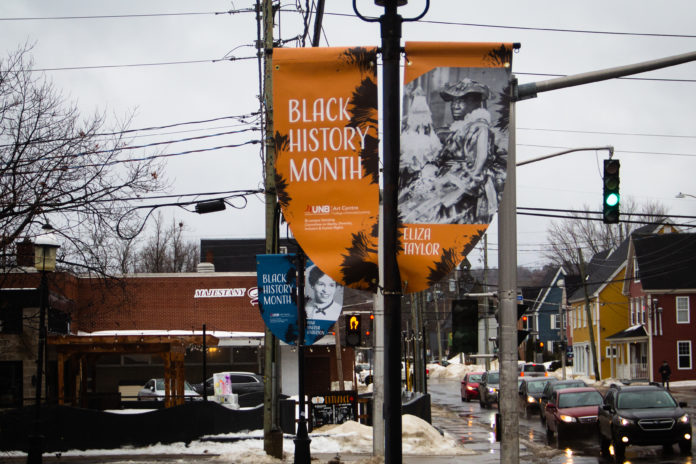
For the second year in a row, the University of New Brunswick Arts Centre is recognizing Black History Month by lining Regent and Westmorland street with banners of Black New Brunswickers who contributed in significant ways to shaping the province through their fight for freedom and equality.
Along with their research, the Arts Centre consulted with elders from the Black community in Fredericton to identify notable Black historical and contemporary figures in the city.
“People have really appreciated the recognition brought to their family members and members of the community,” said Marie Maltais, the director of the UNB Arts Centre.
The banners feature individuals from various professional and personal backgrounds including civil rights activists, politicians, athletes and musicians.
Lawrence Robert Costello is honoured on one of the banners. Costello was a member of the Fredericton Police Force and the only Black Canadian officer in his department. In 2018, he was killed in the line of duty responding to a call.
George Hector, a Gagetown resident born in 1911, known as the “Whistling Banjoman,” is also being honoured. Hector is credited with developing the country music scene of the Canadian East Coast. He performed with well-known fiddler Don Messer and as a solo artist.
Maltais said members of the Black community as well as family members and friends of those being honoured appreciate this project.
“It’s very important that we can appreciate the work that has been done before. The successes against all odds that these people have achieved and how we all can celebrate that, because we’re together in this. We all live here,” said Maltais. “The more we learn about each other, the easier it is for us to understand one another.”
The team creating the banners was initially unsure on how to present their research on notable Black New Brunswickers to the public. In 2020, the Arts Centre had an exhibition called Rediscovering the Roots of Black New Brunswickers. When COVID-19 hit, they had to come up with something different.
Maltais said she came up with a solution on a trip with her son.
“I had been travelling that summer with my son up in the northern part of the province in the Acadian section. Because of COVID, to honour the graduating students, they had flags with students’ pictures on them. I thought, ‘oh, how nice. Now at least everybody knows who they are. Wow, that’s a pretty cool idea. Let’s do it,’” she said.
Maltais hopes everyone who sees the banners can understand the community better.
“This is giving people an opportunity to share and to learn,” said Maltais.
